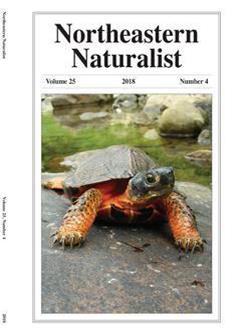How to translate text using browser tools
1 November 2018
Annual Residency Patterns and Diet of Phoca vitulina concolor (Western Atlantic Harbor Seal) in a Southern New Jersey Estuary
Jacalyn Toth,
Steven Evert,
Elizabeth Zimmermann,
Mark Sullivan,
Linda Dotts,
Kenneth W. Able,
Roland Hagan,
Carol Slocum
ACCESS THE FULL ARTICLE

Northeastern Naturalist
Vol. 25 • No. 4
December 2018
Vol. 25 • No. 4
December 2018




